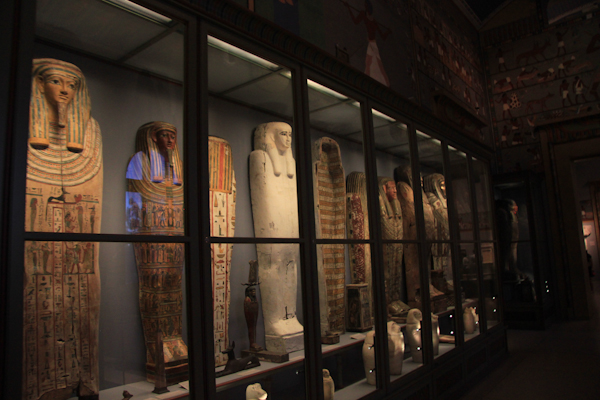Photo by: Nick Conley
A doctor for gladiators in early European history set the path for early medicine through his research of dissection and preservation.
LiveScience published an in-depth article about science in the Dark Ages referencing several historians and scientists expert to the topic.
According to LiveScience, Galen, the doctor, wrote books on the subject that were globally accepted scientific fact until human dissection began taking place during the Renaissance. Livescience wrote that upon researching the mummified remains in question, modern scientists discovered doctors in medieval times knew more than they expected.
A human head and shoulders is what is left of the remains, with parts of the skull and brain removed prior to preservation. LiveScience reported radiocarbon dating suggests the specimen is from A.D. 1200 to A.D. 1280, making the preservation science more advanced than scientists originally thought. The mummy’s arteries had been filled with a wax substance with a reddish tint to aid in preservation, similar to the colored substances used to dye fluid in arteries in modern day human anatomy exhibits.
The LiveScience article says the Dark Ages was once considered by historians as a period of illiteracy until the Renaissance took place several hundred years later, but modern historians have a much different view.
The article quotes James Hannam, a historian and author of the book “The Genesis of Science: How the Christian Middle Ages Launched the Scientific Revolution.”
“There was considerable scientific progress in the later Middle Ages, in particular from the 13th century onward,” Hannam said.
Hannam told LiveScience that many thinkers of the Dark Ages looked to ancient Greek and Roman influences for information instead of the scientists of the time, excluding the scientific advancements made in the Middle Ages.
One of the reasons the article attributes to why scientists were not used as primary sources during this period is related to religion – specifically the feud between Catholics and Protestants.
Junior Clayton Ramick said the interest in religion and the church sparked by historical discoveries is encouraging.
“I think it’s really cool that scientists are still taking into account the religious influence on historical science and medicine,” Ramick said.
Hannam said in the LiveScience article the people who lived before the time of Christopher Columbus never actually believed the world was flat; this misconception resulted from rumors created from anti-Catholic thought.
He also said the rumors of churches slowing medical progress by forbidding human dissection and autopsies were false. Hannam said some churches had autopsies performed on the deceased to search for physical signs of holiness. LiveScience reported that nuns performed the first church-commanded autopsy in the early 1300s. It was said the nuns found three gallstones in the gallbladder of the individual, which they believed represented the Trinity.
Though the church may have been responsible for some autopsies and human dissection in this period, LiveScience reported other autopsies were secular, conducted to learn where diseases and epidemics originated within the body.
Scientists continue to study the remains.
Philippe Charlier, study researcher, physician and forensic scientist at University Hospital R. Poincare in France, said in the LiveScience article his team initially thought the specimen was from the 1400s to 1500s. Charlier said he was surprised when tests dated the remains definitely in the 1200s, as this makes it the oldest anatomical preparation known to Europe.
Charlier said the one piece of the puzzle missing is the identity of the man whom the head and shoulders belong to. It is possible that the body was kept solely for medical research rather than because it belonged to someone historically significant.
Though the specimen remains in private possession, it is scheduled to be on display soon in the Parisian Museum of the History of Medicine.












Be First to Comment